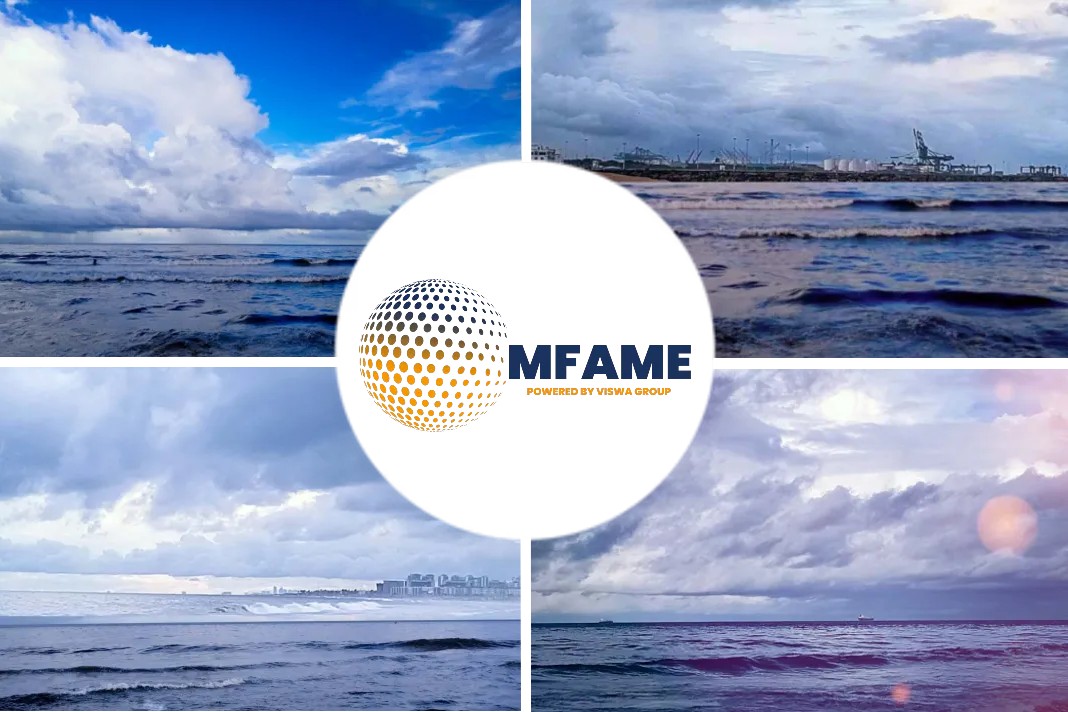The research article published in Science Direct and authored by Li et al. analyses the fire risk analysis and evaluation for LNG ships.
Summary on LNG
Liquefied natural gas (LNG) is liquid fluid basically composed of methane, containing traces of ethane, propane, nitrogen or other components usually present in natural gas as well, the density of which is 447 kg / m3.
According to the national energy strategy, importing natural gas from abroad is an important way to alleviate the energy shortage in China. China’s imports of liquefied natural gas by sea will present rapid growth in the next decade.
However, LNG has large fire and explosion hazard, thus it is extremely important to analyze and safety evaluates fire and explosion risk of LNG ships systematically and objectively, and solve problems in long-distance transportation effectively.
The basic structure of an LNG ship
A MOSS-type ship is used for carrying LNG because the aluminum alloy structure is solid, which does not damage unless direct impacting; no internal stiffeners, check easily and safe; less liquid sloshing effects, without load restrictions.
The drawbacks are that the ship has a large size and a large hatch on the deck. The deck structure is not continuous and more stress concentration points. The Centre of gravity of liquid cargo is high, difficult manipulation, especially in the upper deck with large wind area. In the big ship, even though the poop is several layers higher than the oil tanker, the sight of the steering stand is not ideal.
Fire and explosion hazards of LNG ship
Fire risk
LNG is highly flammable and explosive substance with ignition point of 650 degrees Celcius, rapid flame propagation, large mass burning rate about 2 times more than gasoline, high flame temperature, so the burning is of strong radiant heat, easy to form large area of fire, with characteristics of recrudescence, re-explosion and difficult to stamp out. Liquefied natural gas in the ships is stored at low temperature (162 degrees Celcius) and atmospheric pressure.
A liquid cargo of ultra-low temperature contacting with a general hull, because local cooling produces excessive thermal stress, will make the hull brittle fractures spontaneously and loses ductility, thereby endangering the entire ship’s structure. LNG’s easy vaporization at room temperature makes the pressure and temperature inside the hold rise easily, thus damages the structure of the hold.
Breakage in the combination of working pipeline and loading and unloading system, a rupture in the liquid hold, collision and other factors may lead to leakage of liquefied gas, which will result in fire accidents when encountering fire.
Risk of vapor cloud explosion
The boiling point of LNG(taking methane into account) is 162 degrees Celcius, easy to be gasified. The volume of gasified LNG in the unit will increase 625 times. Once spherical tanks of liquefied natural gas in LNG ship leaks, initial flash vaporization of the leaking liquefied natural gas occurs in the air, generating lots of steam instantaneously, mixing with surrounding air and forming cold steam fog and white smoke after condensation in the air, then diluted and heated to form flammable gas cloud with air, and reaching explosive concentrations (5% – 15%), which will lead to vapor cloud explosion when encountering fire.
The hazard of boiling liquid expanding vapor explosion
When liquefied natural gas spherical tanks on the ship are heated or exposed to external flame for a long time baking, the intensity of spherical tanks will gradually decrease. When the intensity decreases to a certain extent, the sphere will suddenly burst, resulting in pressure suddenly reduces, and liquefied natural gas vaporizes and burn rapidly, resulting in boiling liquid expanding vapor explosion (BLEVE) accidents. The energy of the steam explosion derives from two sides. On the one hand, the liquefied natural gas sphere itself is a high-pressure container. Its sudden burst can release tremendous energy and produce shock waves and throw container pieces to the distance. On the other hand, the intense burning of liquefied petroleum gas can release enormous heat, resulting in a huge fireball and strong thermal radiation.
DOW safety assessment method
It is based primarily on the potential energy of matters and the existing safety measures, DOW method can be used to identify, analyze and evaluate inherent or potential fire and explosion hazards in the production or the operation process, and the seriousness of the consequences that are led to, and to quantify the number of systems or the risk of an action according to the set index, level, or probability, then to determine the probability of occurrence and the degree of risk.
Discussions regarding risk prediction
Risk prediction of vapor cloud explosion depends on equipment materials, system reliability, operation and management level, environmental conditions, weather conditions, and many other factors. In predicting the risk of vapor cloud explosions, the initial conditions were ideal.
If all automatic monitoring equipment fails, the corresponding pipes and valves are unable to close, causing tremendous and rapid leakage of LNG onboard, which mixes with the surrounding air and forms a large coverage of ‘premixed cloud’, where the amount of the gas soon rising into the sky when releasing is not counted.
In city planning, the LNG shipping routes should not lay in places or units of the high density of person or property; when the LNG ship accident occurs, people and valuable materials should be evacuated to safe areas in time, avoiding great staff and property damage.
Safety recommendations
According to the general principles of safety assessment, if a hazardous material has a variety of accident forms, and there are significant differences between the consequences of the accidents, we considered the most serious form of accident.
Since the LNG ship has accident forms of fire, vapor cloud explosion (VCE) and boiling liquid expanding vapor cloud explosion (BLEVE) and others, the assessment of accident consequence and the development of accident prevention measures should take boiling liquid expanding vapor cloud explosion (BLEVE) into account.
Did you subscribe to our daily newsletter?
It’s Free! Click here to Subscribe!
Source: ScienceDirect






















